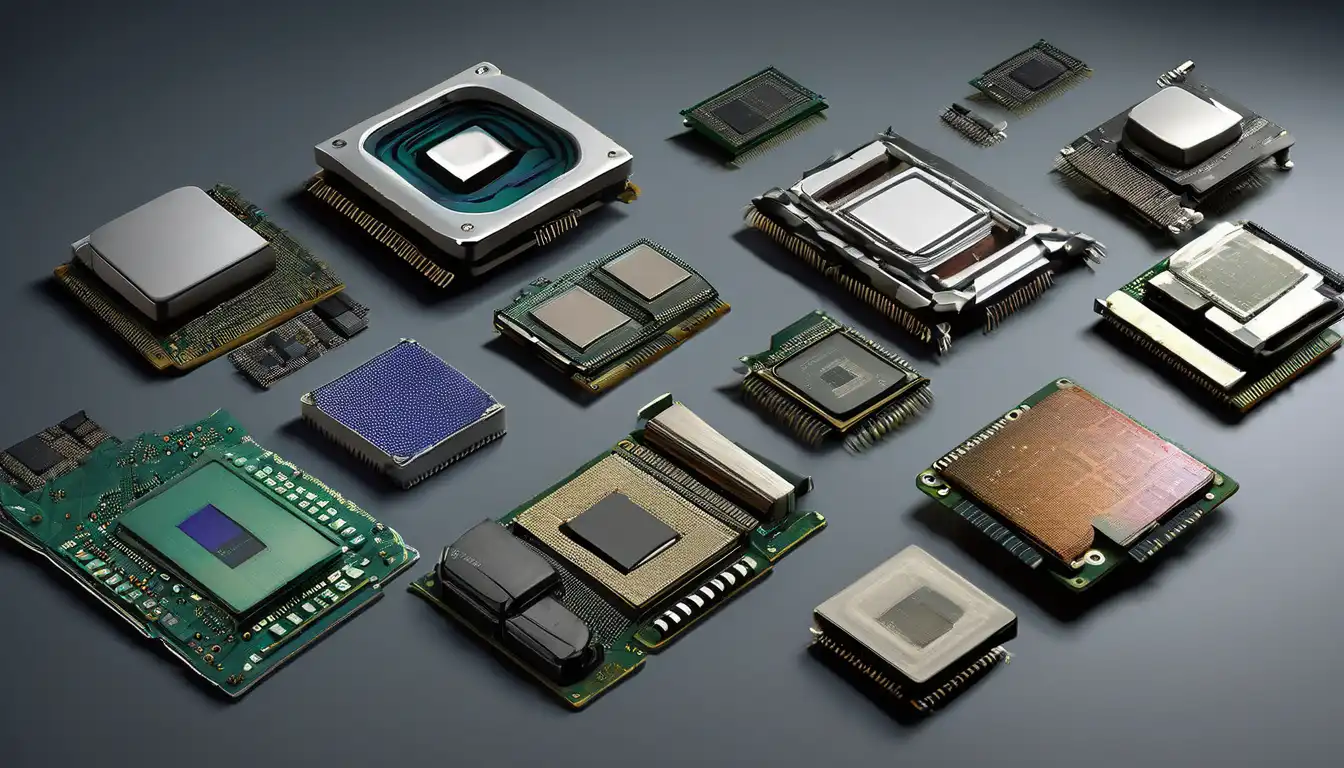The Dawn of Computing: Early Processor Beginnings
The evolution of computer processors represents one of the most remarkable technological journeys in human history. Beginning with massive vacuum tube systems that occupied entire rooms, processors have transformed into microscopic marvels capable of billions of calculations per second. This transformation didn't happen overnight but through decades of innovation, research, and engineering breakthroughs that have fundamentally changed how we live, work, and communicate.
In the 1940s, the first electronic computers used vacuum tubes as their primary processing components. These early processors were enormous, power-hungry, and incredibly fragile. The ENIAC, one of the first general-purpose electronic computers, contained approximately 17,000 vacuum tubes and consumed 150 kilowatts of electricity. Despite their limitations, these early systems laid the foundation for modern computing and demonstrated the potential of electronic data processing.
The Transistor Revolution
The invention of the transistor in 1947 marked a pivotal moment in processor evolution. These semiconductor devices were smaller, more reliable, and consumed significantly less power than vacuum tubes. By the late 1950s, transistors had largely replaced vacuum tubes in computer systems, enabling the development of smaller, more efficient computers. This transition made computers more accessible to businesses and research institutions, paving the way for the computing revolution that would follow.
The integration of multiple transistors onto a single silicon chip created the first integrated circuits in the early 1960s. This breakthrough allowed for even greater miniaturization and paved the way for the development of the microprocessor. The ability to pack more components into smaller spaces followed what would later become known as Moore's Law, predicting the exponential growth of computing power over time.
The Microprocessor Era Begins
In 1971, Intel introduced the 4004, the world's first commercially available microprocessor. This 4-bit processor contained 2,300 transistors and operated at 740 kHz—modest by today's standards but revolutionary at the time. The 4004 demonstrated that complex processing capabilities could be integrated into a single chip, opening up new possibilities for computing applications.
The success of the 4004 led to rapid advancements throughout the 1970s. Intel's 8008 and 8080 processors, along with competing designs from companies like Motorola and Zilog, brought 8-bit processing to the market. These processors powered the first personal computers, including the Altair 8800 and early Apple computers, making computing accessible to individuals for the first time.
The x86 Architecture Dominance
Intel's 8086 processor, introduced in 1978, established the x86 architecture that would dominate personal computing for decades to come. The 8086's 16-bit design offered significantly improved performance over previous 8-bit processors. When IBM selected Intel's 8088 (a variant of the 8086) for its first personal computer in 1981, the x86 architecture became the industry standard.
Throughout the 1980s and 1990s, processor evolution accelerated dramatically. The introduction of the 80286, 80386, and 80486 processors brought protected mode operation, 32-bit processing, and integrated math coprocessors. Each generation offered substantial performance improvements while maintaining backward compatibility with previous x86 processors, ensuring software investments remained valuable.
The Clock Speed Race and Multicore Revolution
The late 1990s and early 2000s witnessed an intense competition for higher clock speeds between Intel and AMD. Processors reached frequencies exceeding 3 GHz, but this approach faced physical limitations due to power consumption and heat generation. The pursuit of ever-higher clock speeds eventually hit a wall, forcing the industry to seek alternative approaches to performance improvement.
The solution emerged in the form of multicore processors. Instead of increasing clock speed, chip manufacturers began integrating multiple processing cores on a single die. This parallel processing approach allowed for better performance without corresponding increases in power consumption and heat output. Intel's Core 2 Duo and AMD's Athlon 64 X2 processors demonstrated the effectiveness of this new direction, marking a fundamental shift in processor design philosophy.
Modern Processor Innovations
Today's processors incorporate sophisticated features that would have been unimaginable just a few decades ago. Modern CPUs include multiple cores, hyper-threading, large cache memories, and integrated graphics processors. Advanced manufacturing processes now create transistors measured in nanometers, allowing billions of transistors to be packed onto a single chip.
Recent innovations include heterogeneous computing architectures that combine high-performance cores with power-efficient cores, AI acceleration hardware, and specialized processing units for specific tasks like machine learning and cryptography. These developments reflect the increasing specialization of processors for particular applications while maintaining general-purpose computing capabilities.
The Future of Processor Technology
Looking ahead, processor evolution continues to push the boundaries of what's possible. Quantum computing represents one of the most promising frontiers, with the potential to solve problems that are intractable for classical computers. While still in early stages, quantum processors have demonstrated capabilities in specialized applications and continue to advance rapidly.
Other emerging technologies include neuromorphic computing, which mimics the structure and function of the human brain, and photonic computing, which uses light instead of electricity for data processing. These approaches could overcome current limitations in energy efficiency and processing speed, opening up new possibilities for artificial intelligence and scientific computing.
The evolution of computer processors has been characterized by continuous innovation and adaptation. From room-sized vacuum tube systems to pocket-sized smartphones containing processors more powerful than supercomputers from just a few decades ago, this journey demonstrates humanity's remarkable capacity for technological advancement. As we look to the future, the ongoing evolution of processor technology promises to continue transforming our world in ways we can only begin to imagine.
For more information about specific processor architectures, check out our guide to understanding CPU architectures or explore the history of personal computing revolution that processors made possible.
